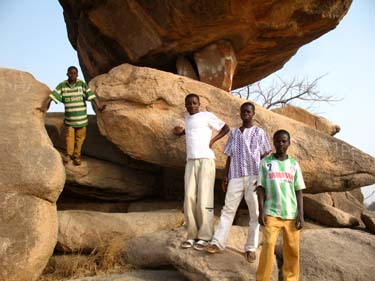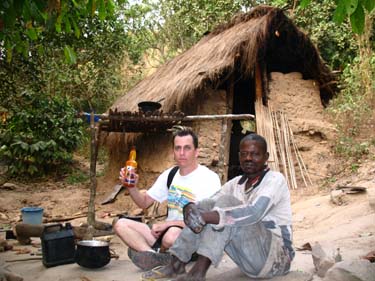Cedi Bead Factory
Tuesday, March 20th, 2007Hard to believe we’re still not done with the tour de Ghana posts, even though we finished the actual trip back in January. Lots of stuff has happened since then, and we will eventually blog about some of it. It would help if we thought that anyone was reading any of this. Anyone out there? Anyone?
On the last day of our tour de Ghana, we stopped at the Cedi Bead Factory. They make recycled glass beads here. Although many Ghanaian men, women and children wear beads, many of the beads made here are exported to Europe, Asia and North America. While we were there, they were fulfilling an order from Japan.
There’s more than one way to make recycled glass beads. One way is to start with glass that is already colored, such as green bottle glass. Another way is to start with clear glass and add color to it. In either case, the glass is ground up into fine particles, put into molds and then baked in an outdoor oven at a very high temperature.
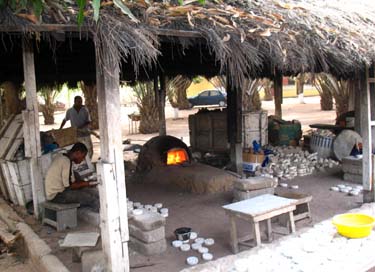
When the beads come out of the oven, their color is not apparent. This man places them in a basic cement basin and douses them with water.
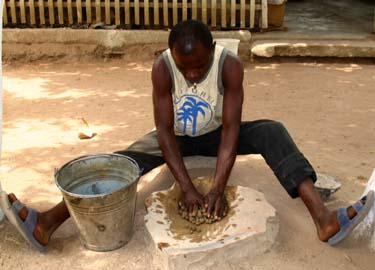
After they’ve been washed, you can see how pretty they are. These are particularly large beads.
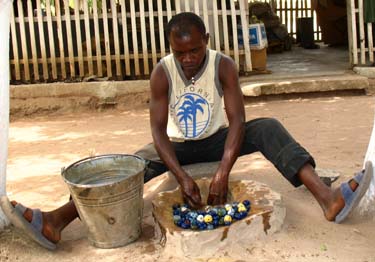
Many of the beads have designs on them. We thought at first that the designs were painted on, but actually they are created when the glass is still in powder form. The bead makers add different colors of powdered glass to the mold and create designs by moving the powder around with small, toothpick-like tools. The result is like a miniature version of those colored sand sculptures inside glass vases that you see for sale in sea shell shops at the beach in the US. When the beads bake, the color sets.
The entire procedure is extremely labor intensive. Each bead is made by hand.
This woman is stringing some finished beads to prepare them for sale.
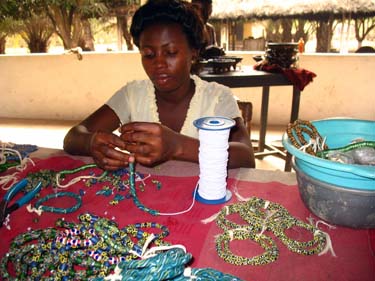
Yes, we bought some. How could we not?

